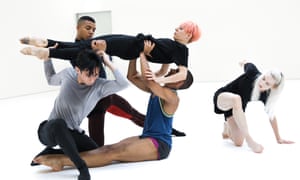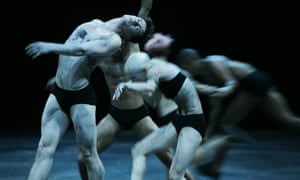n a shiny Airstream trailer, on the roof of his company’s new headquarters, Wayne McGregor looks across the Olympic Park in Stratford, east London. This is not your usual dance HQ. But McGregor isn’t what you’d expect from a choreographer. The resident brainbox of British dance is always questing for new territory. His work with ballet companies often attracts headlines – it’s a world new to extreme moves, music by Mark Ronson and the White Stripes, big ideas about the multiverse – but his own company is a research lab for innovation.
Now, the science geek is using his own DNA, and collaborating with scientists at the Wellcome Trust Sanger Institute, as the inspiration for a show called Autobiography. “If you’re looking for a document of my life with a narrative arc about me growing up in Stockport, you’ll be frustrated,” he grins. Instead, it’s Who Do You Think You Are? but with genes. The show began taking shape when McGregor wondered how artificial intelligence (AI) might animate his archive of 25 years’ working in dance. This led him to consider the body itself as “a living archive. Not as a nostalgia-fest but as an idea of speculative future. Each cell carries in it the whole blueprint of your life, basically.” Your genetic code tells the story of your past – and predicts possible stories of your future.

Eager to learn more, McGregor tried the online DNA test 23andMe. “But that wasn’t enough – I wanted a full sequence [of his own genome].” Through researchers in Utrecht, he is accessing “three billion bits of information. As a storage system it’s absolutely enormous – 60 volumes of the Encyclopaedia Britannica. Thinking of genetics as a data-storing system, how might we be able to store dance in our genetic makeup? I’m interested to see how we can take that information and convert it into other forms.”
How does data become dance? Autobiography pays tribute to the American master Merce Cunningham, a pioneer of using software to generate new choreographic material. In a programme note, Autobiography’s dramaturg, Uzma Hameed, explains: “In this piece, book-ended by a fixed beginning and end, a number of choreographic events from the 23 volumes in the ‘life library’ are selected and sequenced afresh for every performance by an algorithm based on McGregor’s genetic code. For each iteration of the piece, the computer randomly selects a different section of code from the choreographer’s genome to determine which material the audience will see, performed by which dancers and in what order. The system dictates that no individual sequence of code can be used more than once, so that no two performances can ever be alike.”
It is, says McGregor, “a piece that changes every night. We can get 24,000 permutations – we don’t have that many shows! It’s a struggle for the dancers, not knowing what they’re doing [very far] in advance, but then making meaning from it. It’s a little experiment that I think speaks directly to the idea of life-writing. Life unfolds, without our having control, and we have to deal with those instances. I think that can be a really beautiful thing.”










